This is a continuation of a series of posts on the Sony a7RIII. You should be able to find all the posts about that camera in the Category List on the right sidebar, below the Articles widget. There’s a drop-down menu there that you can use to get to all the posts in this series; just look for “a7RIII”.
Two people have said that the a7RII focussed stoped down with the Sony/Zeiss (Zony) 55 mm f/1.8 lens if the camera was set to Setting Effect on, even in AF-S mode. I decided to try it with the a7RIII.
I’ll get to that, but first I wanted to show you a tweak I’ve done to the LensAlign setup that allows me to get further away, and should also produce more reliable results at narrow apertures. The main idea is to make the ramp longer. I dusted off an old LensAlign Pro, and printed a new ramp for it.
The ramp is now a simple checkerboard. Incidentally, I was able to create the image for the ramp in one line of Matlab code:
image = checkerboard(20,200,20) > 0.5;
Here’s an approximation of the way the camera sees the target:
I didn’t line things up, but you get the idea.
Here’s the view from where I stand when I capture the images:
An a7RIII is on the camera stand. A remote release is on the tray. I’m just using one LED panel now, the one that’s over the target. The other LED panel is turned off. The horizontal and vertical movements of the stand make it easy to line up the target.
Here is the focus shift of the Zony 55 in the image (sensor) plane:
The dots are the samples, for each Adobe RGB color plane, with 10 shots per f-stop. The lines are the averages for all ten shots. Negative numbers indicate front-focusing. The image-plane shift is in micrometers (um). The focus shift is modest and on the order of twice the distance between the green and red focus locations, which are separated because of the longitudinal chromatic aberration (LoCA) of the lens.
Here are the circles of confusion (CoCs) implied by the above misfocusing:
The worst errors are at wide apertures, and they are dominated by LoCA, not focus shift.
Now with autofocus on. AF-S mode, flexible spot, small spot size, Setting Effect on, release priority set to AF.
Looks a lot like the focus shift itself, doesn’t it? I don’t see any sign that the camera’s autofocus system is doing any correction. Looking at the CoCs:
Unsurprisingly, it looks a lot like the focus shift curves as well.
The good news: there’s not much focus shift with the Zony 55. The bad news: AF-S does nothing to ameliorate it.
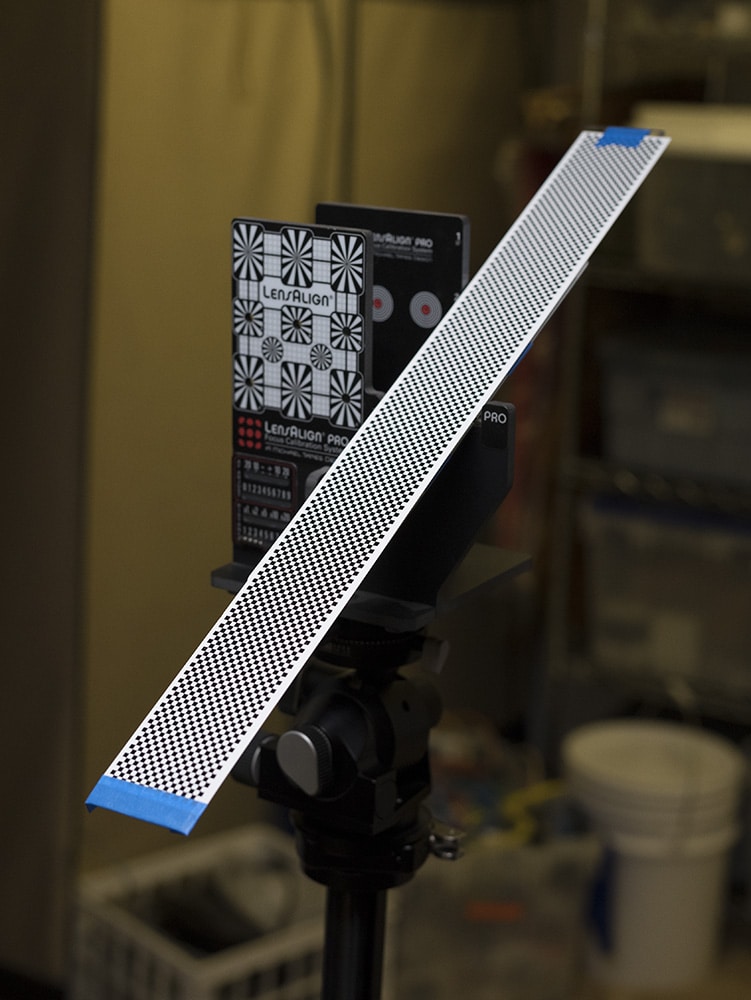
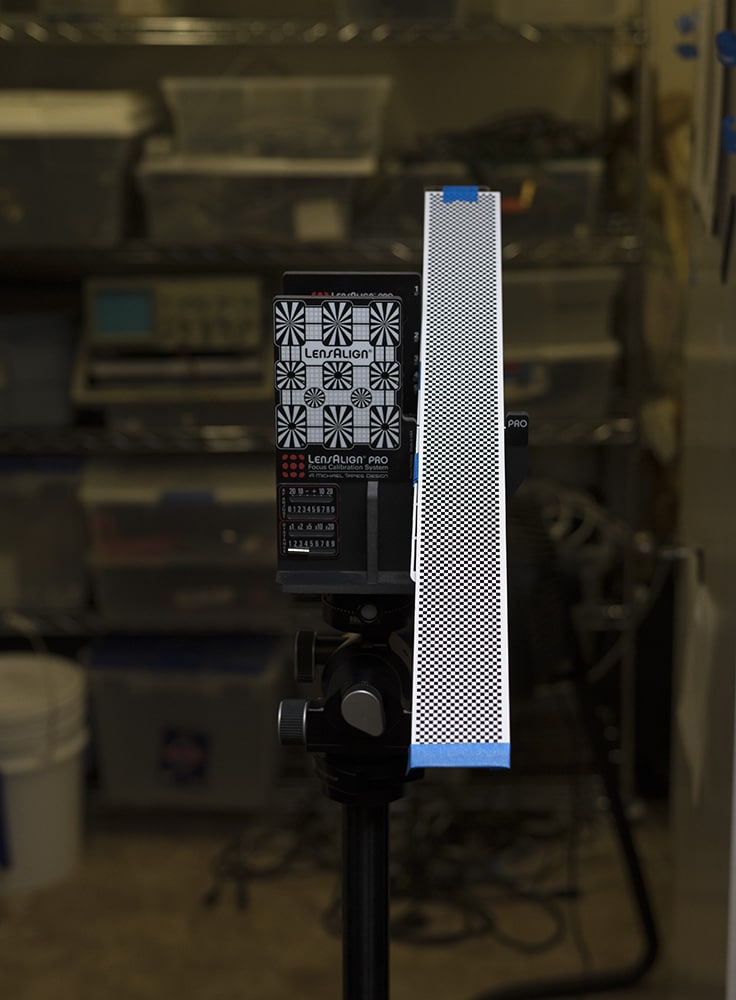
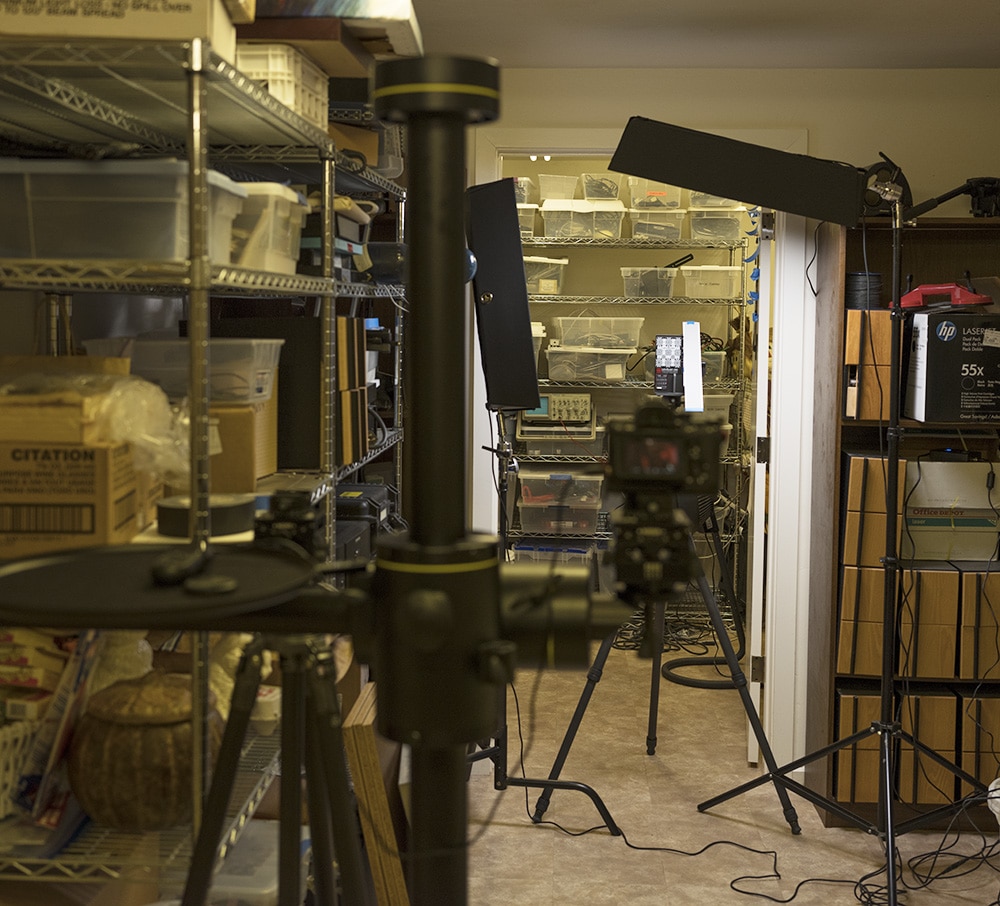
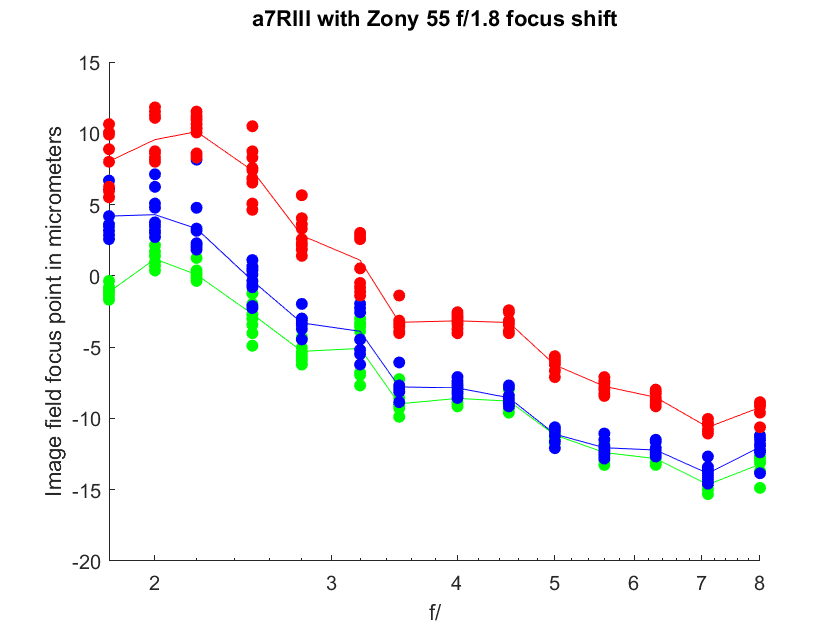
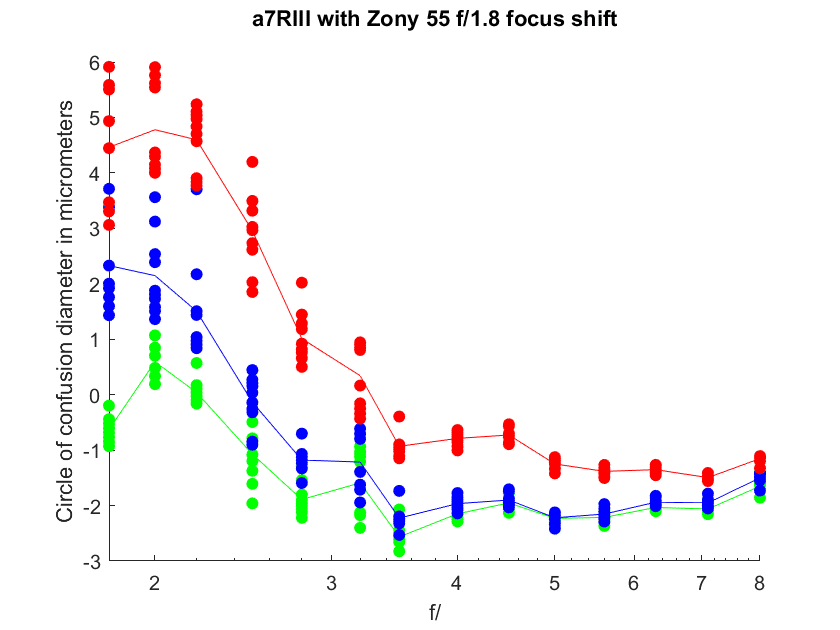
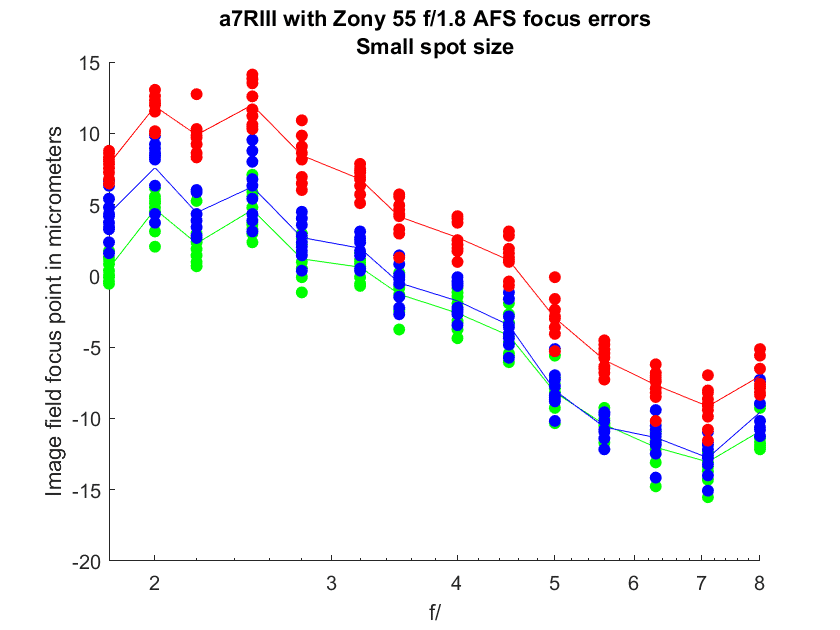
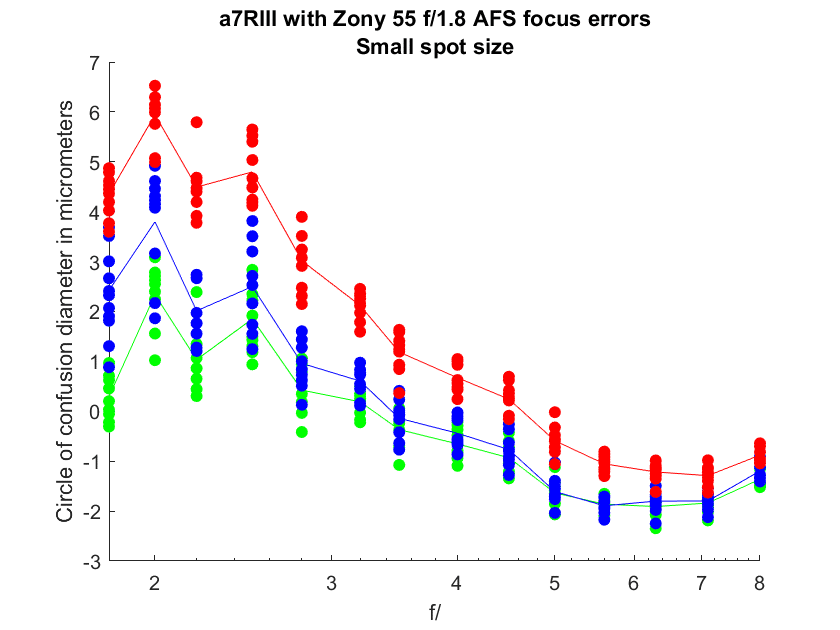
Leave a Reply